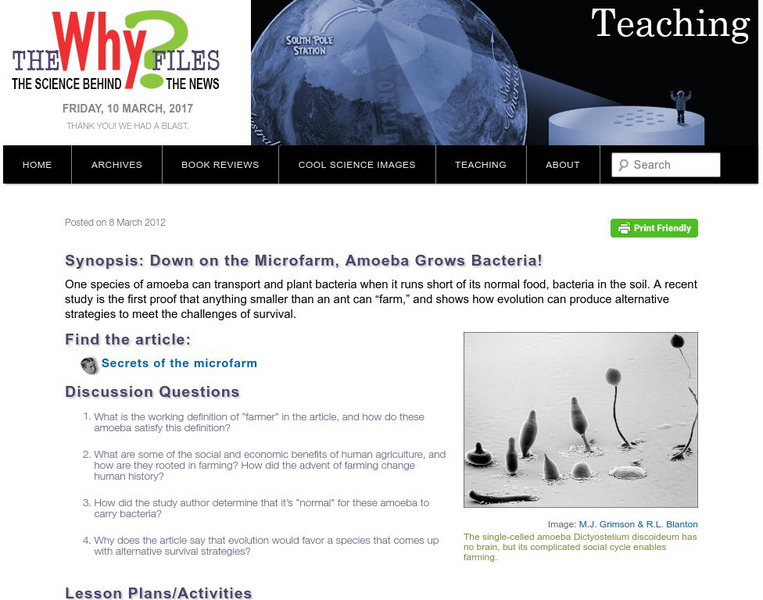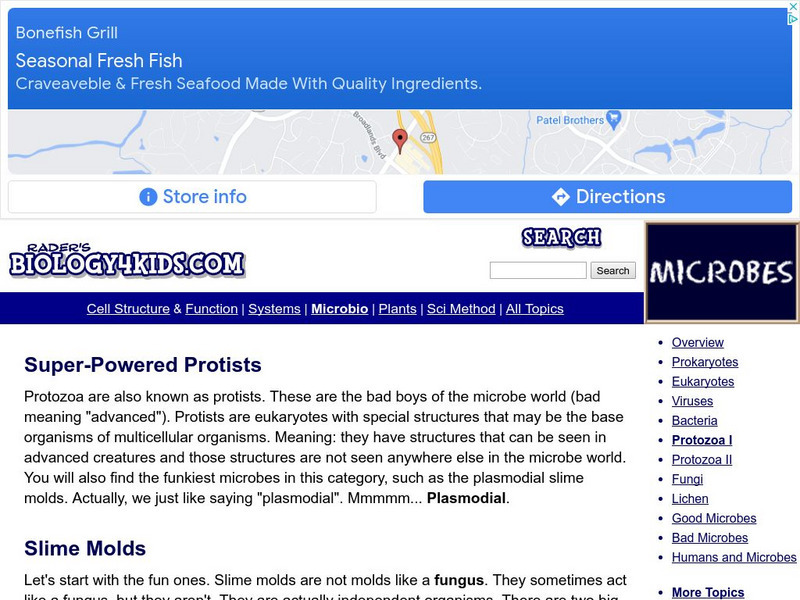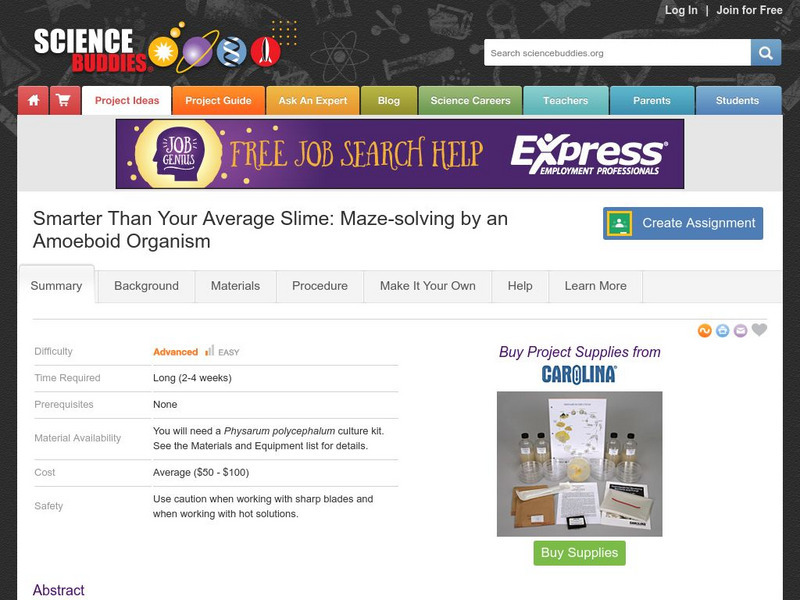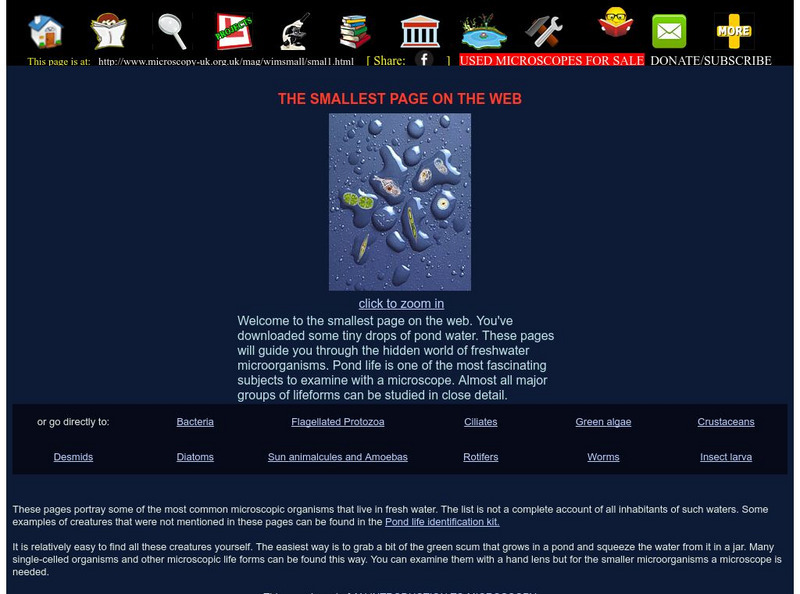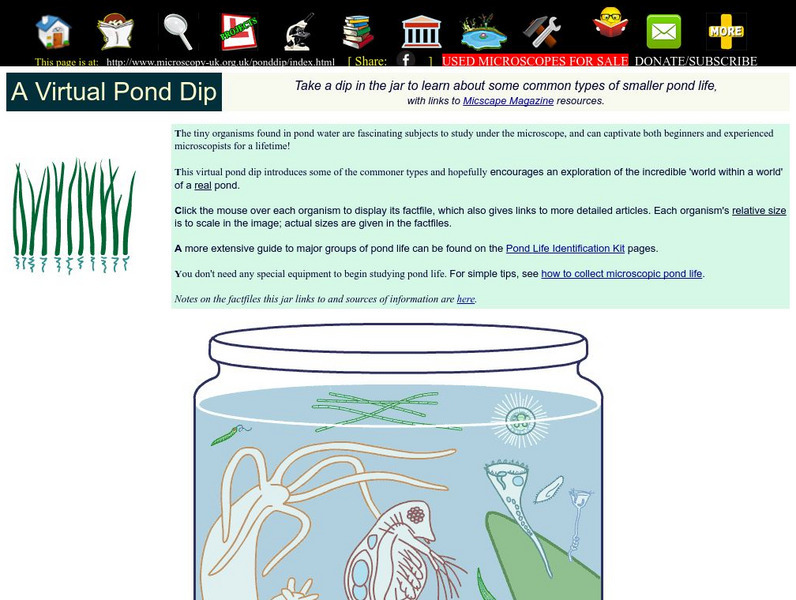Curated OER
Reproduction
In this biology worksheet, students identify and locate various vocabulary terms pertaining to the stages of reproduction. There are 16 biology terms located in the word search.
Curated OER
Zoology Word Search Puzzle
In this science worksheet, middle schoolers look for the words that are related to the concept of zoology that is reviewed in the sheet. They also acquire new vocabulary.
Curated OER
New York State Testing Program English Language Arts Book 1--Grade 7 (2006)
In this New York State Testing Program English Language Arts worksheet, students read several passages and two poems and answer reading comprehension questions. Students then write an essay response to one of the passages.
Cool Math
Coolmath: Exponentials & Logarithms Alien Amoebas
Use the example of alien amoebas to understand exponentials and logarithms.
BiologyWise
Biology Wise: Life Cycle of an Amoeba
The amoeba is a unicellular protozoan organism that has existed since prehistoric times. Its physical characteristics, life cycle, and metabolic activities are described in this resource.
BiologyWise
Biology Wise: Amoeba Facts
Presents facts about amoebas, including their physical characteristics, reproduction, and classification.
BiologyWise
Biology Wise: Amoeba Movement
Explains how an amoeba is able to move by altering the shape of its cell's cytoplasm and shifting between fluid and solid states. The amoeba can also form pseudopodium that allow it to move as well as to engulf prey through phagocytosis.
BiologyWise
Biology Wise: Classification of Amoeba (Ameba)
Describes the characteristics of amoeba and their classification.
University of Wisconsin
The Why Files: Down on the Microfarm
Explanation of how an amoeba can farm to make its own food when necessary.
American Institute of Biological Sciences
Action Bioscience: Malaria, Algae, Amoeba and You: Eukaryotic Relationships
Researchers are considering more recent findings of eukaryotes and their phylogeny. Investigate the insights to understand that there may be more progress found in determining the relationships to other eukaryotes.
Biology 4 kids
Biology4 Kids: Super Powered Protists
Meet the "big guys" on campus. Protists are the more advanced types of eukaryotes that are unique such as amoeba and slime molds.
Science Buddies
Science Buddies: Smarter Than Your Average Slime: Maze Solving by an Amoeboid
In this science fair project, grow the acellular slime mold Physarum polycephalum and test its ability to find the shortest path through a maze.
Science Education Resource Center at Carleton College
Serc: Investigating Microbes in a Nature Center
In this Nature Center activity, students will identify microbes found in the pond and creek in the Eden Valley-Watkins Nature Center. They will collect samples using a Petri dish.
Microscopy UK
Microscopy Uk: The Smallest Page on the Web
Dive into a single drop of pond water to discover the microscopic world of freshwater organisms. Learn about protists, bacteria, and other tiny inhabitants that can only be seen under a microscope.
Microscopy UK
Microscopy Uk: A Virtual Pond Dip
In this site, you will be introduced to some of the more common organisms found in a pond. Contains a thorough guide to small and microscopic pond life with links to other descriptive sources.
Centers for Disease Control and Prevention
Centers for Disease Control: Parasites and Health: Amebiasis
A very comprehensive over view of the Entamoeba histolytica. Information includes geographic distribution, infection agents, symptoms and treatment.
Utah Education Network
Uen: Micro Organisms Don't Drink That Water
If you are looking for an introduction to protozoans and algae, this is a good place to start. You'll view some images of them and explore a few of their basic adaptations for survival.
Enchanted Learning
Enchanted Learning: Pond Life Animal Printouts
Filled with printable pages of both plant and animal pond life, Enchanted Learning features fact sheets with color pictures.
BiologyWise
Biology Wise: Classification and Characteristics of Protozoa
Discusses the general characteristics of protozoa and how they can be divided into different types based on their mode of locomotion, mode of nutrition, or mode of respiration. Includes a list of facts about protozoa.
Ducksters
Ducksters: Biology for Kids: Protists
On this site, investigate the organisms called protists in the science of biology including types, what they eat, algae, slime molds, and amoebas.
My Science Site
Pond Water Plants and Animals [Pdf]
This resource depicts some pond water plants and animals one might happen to spot while peering through their microscope lense. This resource is in PDF form; requires Adobe Reader.
Exploratorium
Exploratorium: Microscope Imaging Station: Cell Motility
This interesting site explains how cells move and provides videos depicting the movement of various human and animal cells.
Middle School Science
Protist Lab
In this concise lab exercise, you will examine protists under the microscope, see examples of different protist types, and compare modes of locomotion.
BiologyWise
Biology Wise: Unicellular Organisms
A unicellular organism is made of only a single cell. Its characteristics are described and several examples are provided.
Other popular searches
- Amoeba and Paramecium
- Paramecium Euglena Amoeba
- Observing Amoeba
- Paramecium, Euglena, Amoeba
- Amoeba Cells
- Paramecium, Eugenia, Amoeba
- Amoeba Bell Ringer
- Binary Fission Amoeba
- Paramecium Eugenia Amoeba
- Amoeba Dysentery
- Parasitology Amoeba
- Amoeba Endocrine System





